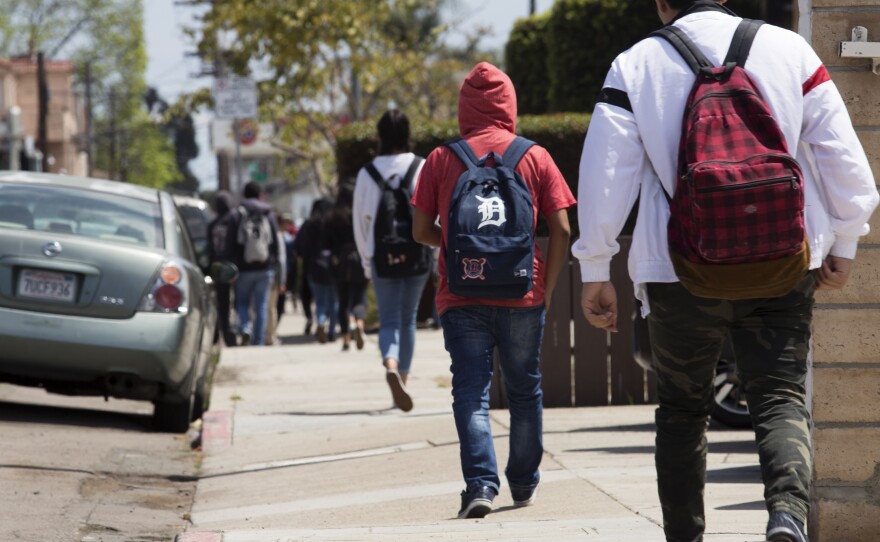California schoolchildren could return to their classrooms as soon as late July, though likely with modifications, Gov. Gavin Newsom said Tuesday as he outlined plans for easing stay-at-home orders amid the coronavirus pandemic.
Newsom said no official decisions have been made, but he acknowledged there have been “learning losses” as parents have sought to teach their kids from home since most schools and classrooms closed in mid-March to slow the spread of the coronavirus. School districts and families have struggled to adapt to at-home learning and the deficits have been even greater in homes without technology or where parents are essential workers who are not at home to do home-schooling, he said.
"That learning loss is very real," Newsom said. “If we can maybe start up the school year a little earlier, maybe we can help close that gap."
But schools may look radically different than before, said Sonia Angell, the state's public health director. She and Newsom provided few details on what education would be like.
Newsom previously said schools may launch with staggered start times to limit the number of students in the school at one time and make changes to recess, lunch and other school gatherings that draw large groups of students together. And school districts will have leeway in implementing the changes, which will need to be worked out with the teachers' unions.
RELATED: San Diego Unified Wants Summer Instruction, But It Comes With Costs
Newsom on Tuesday outlined a four-phase plan to gradually reopen the state when hospitalization rates due to coronavirus begin to stabilize. Still, California remains focused now on obtaining more protective gear for essential workers and increasing testing and tracing of the virus.
In the next phase, likely just weeks away, parts of the economy such as retailers and manufacturers will begin operating again, possibly through curbside pickup at stores. Childcare and summer schools along with parks, trails and other outdoor spaces may also be allowed to reopen.
Unlike some other states that are already allowing hair and nail salons to operate, those would have to wait in California, Angell said. And concerts and sporting events are even further away, possibly not until there's a virus treatment.
It wasn't clear when restaurants may be able to reopen for dine-in services.
Aiming to slow the spread of the virus, Newsom issued a statewide stay-at-home order March 19, closing all but essential businesses. Health officials have said those efforts have helped flatten the curve of the outbreak in California but they have also caused massive unemployment and economic upheaval.
As the state considers reopening, Newsom is juggling a state with a split personality. Officials in some rural counties say they're ready to reopen while urban centers are wary.
On Monday, officials from six rural Northern California counties — Sutter, Yuba, Butte, Colusa, Tehama and Glenn — sent a letter asking the governor to allow them to implement “a careful and phased reopening of our local economies." The counties, with a population of about 500,000, have seen fewer than 100 confirmed COVID-19 cases and only a handful of deaths.
For now, Newsom said local governments can only adopt stricter, not looser, measures than the state's plan. Without addressing those six counties directly, he pushed back on those seeking to reopen more quickly, saying it can't be done without better tracking and tracing capabilities.
For most people, the virus causes mild or moderate symptoms, such as fever and cough that clear up in two to three weeks. For some, especially older adults and people with existing health problems, it can cause more severe illness and death.







